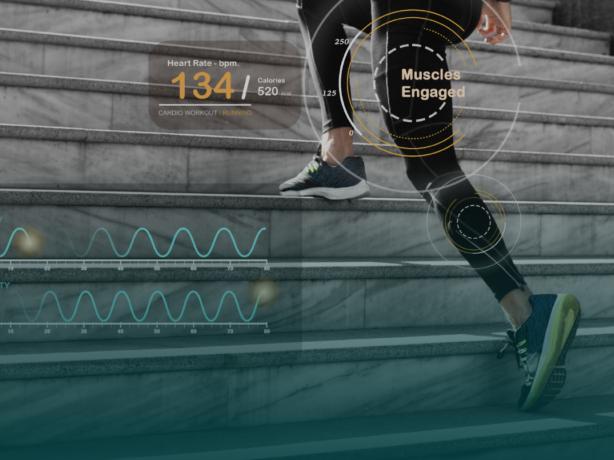Introduction: The Intersection of Technology and Sports
In recent years, the integration of big data and artificial intelligence (AI) into sports has transformed the way athletes train, teams strategize, and fans engage with their favorite sports. These cutting-edge technologies are providing deeper insights, increasing performance efficiency, and revolutionizing decision-making in every aspect of the sports world. From tracking performance metrics to predicting outcomes, big data and AI are increasingly becoming essential tools for athletes, coaches, and sports organizations.
The application of these technologies is not limited to the professional level—amateur athletes and youth programs are also benefiting from the data-driven insights that can significantly improve performance. As we look ahead, the future of sports seems poised for even more innovation, as the tools provided by big data and AI continue to evolve and deepen.
This article delves into how big data and AI are reshaping athlete training and game strategy. We will explore how these technologies are being used to optimize performance, enhance training programs, predict outcomes, and provide an edge in competitive sports.
Section 1: Understanding Big Data and AI in Sports
1.1 What is Big Data in Sports?
Big data refers to the massive amounts of data generated through various sources, such as sensors, wearables, and tracking devices used in sports. These data sources collect detailed information about an athlete’s movement, physiological responses, and even external factors such as weather or opposition performance. In sports, big data is analyzed to uncover patterns and correlations that can improve performance, reduce injury risks, and develop game strategies.
For example, in basketball, data on player movements, shot accuracy, fatigue levels, and game conditions can be analyzed to develop better training regimens, adjust in-game tactics, and predict outcomes. Similarly, soccer teams can use data from every pass, dribble, and sprint to identify strengths and weaknesses in player performance, allowing for more tailored training programs and strategic decisions.
1.2 How AI Enhances Data Analysis in Sports
While big data focuses on the collection and storage of information, artificial intelligence (AI) plays a crucial role in analyzing and interpreting this vast amount of data. AI systems can process massive datasets far quicker than human analysts and detect patterns that may not be immediately apparent. By using machine learning algorithms, AI can continually improve its accuracy and predictions by learning from new data inputs over time.
AI in sports is used in various applications, including:
- Predictive analytics: AI models can forecast the outcome of games, predict player injuries, and even suggest optimal game strategies based on historical performance data.
- Performance optimization: AI-driven tools can evaluate an athlete’s form, technique, and decision-making in real-time, offering suggestions to enhance performance.
- Game simulations: Teams use AI to simulate game scenarios and test out different strategies without the need for actual matches, helping them prepare for real-world challenges.
Together, big data and AI provide coaches, analysts, and athletes with deeper insights, enabling smarter decision-making, precise training, and more effective game strategies.
Section 2: AI and Big Data in Athlete Training
2.1 Revolutionizing Personalized Training Programs
One of the most significant benefits of big data and AI in sports is the ability to personalize training. Traditionally, training programs were designed for groups, with general drills that might not account for individual differences in an athlete’s body type, performance, or goals. However, with data-driven insights, coaches can now design tailored training regimens based on an athlete’s unique needs.
- Wearable Technology: Devices like heart rate monitors, fitness trackers, and GPS systems provide real-time data about an athlete’s physical state. Wearables collect information on vital signs (heart rate, blood oxygen levels), movement patterns, and even muscle fatigue. This data allows coaches to understand how an athlete’s body is responding to training and make adjustments as needed. For example, if an athlete is showing signs of fatigue or potential injury, the training intensity can be modified to prevent overtraining.
- Biomechanical Data: Advances in technology have enabled the tracking of an athlete’s biomechanics, including joint angles, gait, and body posture. Using motion capture systems and AI analysis, coaches can identify inefficiencies in movement, such as poor form or technique that may lead to injury or reduced performance. This data helps athletes make subtle adjustments to optimize their movements and enhance efficiency.
- Nutritional and Recovery Insights: Big data can be applied to an athlete’s nutrition and recovery routines. Using information about sleep patterns, energy expenditure, and recovery times, AI-driven algorithms can suggest the best foods, rest periods, and recovery methods to keep athletes in peak condition. By personalizing nutrition and recovery plans, athletes can maximize their performance without risking injury or burnout.
2.2 Injury Prevention and Rehabilitation
Injury prevention is another critical area where big data and AI are making a significant impact. By analyzing historical data on injuries and tracking athletes’ physical stress levels, AI systems can predict potential injuries before they happen.
- Predictive Injury Models: AI algorithms can be trained on injury data to recognize patterns and predict future injury risks. For example, if a basketball player is showing signs of knee strain or an increased workload, AI can alert the coaching staff that the player is at higher risk of injury, leading to early interventions such as rest, rehab, or a modified training regimen.
- Real-Time Injury Analysis: During games or practices, AI-powered systems can monitor athletes in real-time for signs of injury or fatigue. If an injury occurs, the system can immediately assess the extent of the injury based on movement patterns, physiological data, and video analysis, helping the medical team make quick decisions about treatment and recovery.
- Rehabilitation Tracking: After an injury, AI can track an athlete’s progress through rehabilitation exercises and suggest personalized recovery plans. By analyzing data on mobility, strength, and flexibility, AI systems ensure that the athlete recovers properly and does not return to the field prematurely, reducing the likelihood of re-injury.
Section 3: AI and Big Data in Game Strategy
3.1 Game Preparation and Tactical Analysis
AI and big data are not just beneficial for training—these technologies are also changing how teams prepare for games and develop strategies. Coaches and analysts use data to gain a competitive edge by analyzing the strengths and weaknesses of both their team and their opponents.
- Opponent Analysis: Teams now use video analysis software combined with AI to study the playing styles of their opponents. By analyzing match footage and player movement patterns, AI can identify key tactics, player tendencies, and weaknesses in the opponent’s defense or offense. This information can then be used to adjust the team’s strategies, whether it’s focusing on exploiting defensive gaps or counteracting offensive plays.
- In-Game Decision Making: During a match, coaches can use real-time data to make tactical adjustments. For example, AI can analyze the effectiveness of a team’s current formation or strategy, suggesting changes based on the unfolding game. In basketball, for instance, AI can track shot selection, pass efficiency, and defensive performance, helping coaches make tactical substitutions or play calls on the fly.
- Simulation of Game Scenarios: AI-driven game simulations allow teams to test out different strategies in a virtual environment. This enables coaches to understand how their team might perform against a particular opponent in specific game situations, such as power plays, penalties, or end-of-game scenarios. The data collected from these simulations can inform real-world strategies, providing teams with a deeper understanding of potential outcomes.
3.2 Advanced Performance Analytics and Player Insights
In-game performance analytics, powered by AI and big data, allow teams to monitor players in real time and adjust strategies based on individual performances. These insights can include:
- Player Movement Tracking: In sports like football, soccer, and basketball, tracking players’ movement across the field or court is crucial. Big data tools can measure a player’s speed, distance traveled, and even specific movements like sprinting, cutting, or jumping. This information can help coaches identify the most effective players for particular roles or formations.
- Decision-Making Metrics: AI systems are now able to assess players’ decision-making skills during games. For example, AI can analyze whether a soccer player makes the right pass at the right time or if a basketball player consistently selects the best shot. These insights help coaches develop strategies to improve individual decision-making and team coordination.
- Performance Comparison: Coaches can compare an athlete’s performance to both their past performances and those of their teammates or opponents. By using historical performance data, AI can highlight areas where a player has improved or where they are struggling, providing insights for future training or in-game strategies.

Section 4: Ethical Considerations and Challenges
4.1 Privacy and Data Security Concerns
The use of big data and AI in sports raises significant privacy and security concerns. Athletes’ personal data, including health metrics, performance statistics, and even social interactions, is often stored and analyzed by sports teams, companies, and tech firms. This extensive collection of personal information can lead to breaches of privacy, with athletes potentially feeling uncomfortable about how their data is used.
- Data Consent: Athletes should have control over what data is collected and how it is used. Clear data consent protocols should be established to ensure that athletes understand the implications of sharing their data with teams, sponsors, and tech companies.
- Cybersecurity: With the increasing reliance on digital tools, ensuring the security of sensitive data is critical. Sports organizations must invest in robust cybersecurity measures to protect athletes’ data from hacking, leaks, or misuse.
4.2 Maintaining Human Element in Sports
While big data and AI are revolutionizing sports, there is a concern that an over-reliance on these technologies could strip away the human element of sports. The unpredictable nature of sports—the drama, emotion, and spirit of competition—is part of what makes them so captivating for fans.
- Balancing Tech with Tradition: It is essential to strike a balance between technological advancements and maintaining the integrity of the sport. Coaches, athletes, and fans must continue to appreciate the value of human judgment, intuition, and creativity in decision-making, even as data and AI become more prominent.
Conclusion: A New Era in Sports
Big data and AI are not just the future of sports—they are the present. From enhanced athlete training to real-time game strategies, these technologies are transforming every aspect of the sports world. As data continues to grow in sophistication and AI capabilities improve, we will likely see even more profound changes, with sports becoming increasingly data-driven, efficient, and strategic.
However, it is crucial for sports organizations, athletes, and fans to embrace these innovations responsibly. Striking a balance between technology and tradition, while addressing ethical and privacy concerns, will ensure that sports remain as exciting and human-centered as ever. The convergence of sports and technology is undoubtedly a thrilling prospect, but it must always honor the spirit of competition, teamwork, and personal growth that makes sports so universally cherished.


































Discussion about this post